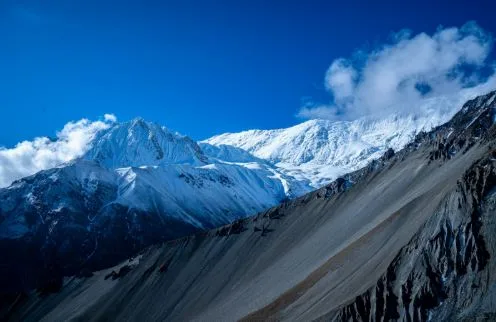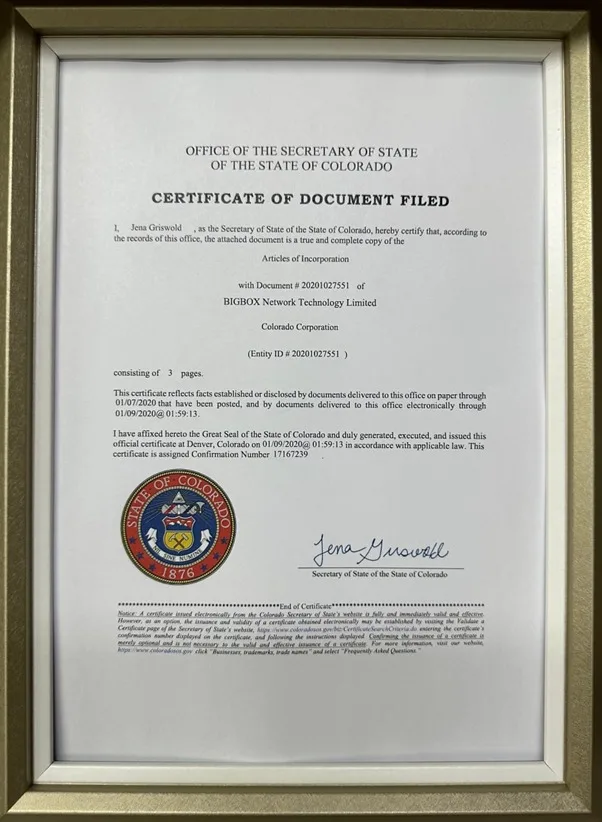Trek Nepal’s Most Scenic Trails: Annapurna Circuit, ABC Trek, and Manaslu Circuit Trek Together
Nepal’s Himalayas are domestic to a few of the most breathtaking trekking routes in the world. Among them, three standout ventures draw trekkers from each corner of the globe: the Annapurna circuit Trek, Annapurna Base camp Trek, and Manaslu circuit Trek. Each of these trails offers a special experience—be it in scene, elevation, social lavishness, or physical challenge.In this combined article, we’ll walk through the highlights of each journey, investigate why doing them together or consecutively makes sense for enthusiastic travelers, and offer viable counsel for anybody envisioning of investigating these Himalayan marvels.
- Annapurna circuit Trek: The Classic Himalayan Loop
Overview:
The Annapurna circuit Trek is one of Nepal’s most famous and changed trekking undertakings. It circles the whole Annapurna Massif, taking trekkers through subtropical woodlands, elevated knolls, parched valleys, and over the popular Thorong La Pass (5,416 meters)—the most elevated point of the trek.
Highlights:
Cross Thorong La Pass, one of the world’s most noteworthy trekking passes
Visit the sacrosanct Muktinath Sanctuary, venerated by both Hindus and Buddhists
Explore charming towns like Manang, Pisang, and Marpha
Enjoy all encompassing sees of Annapurna I, II, III, IV, Gangapurna, Tilicho Top, and Dhaulagiri
Relax in the normal hot springs at Tatopani
Duration: 15–18 days
Difficulty: Direct to strenuous
Best Time to Go: Walk to May and September to November
The Annapurna Circuit is best known for its assortment. You’ll journey through a handful of environments, meet assorted ethnic communities counting Gurungs, Thakalis, and Manangis, and get a full Himalayan social immersion.
- Annapurna Base camp Trek: The Portal to the Glaciers
Overview:
The Annapurna Base Camp trek leads you profoundly into the heart of the Annapurna Haven. Beginning from the lavish valleys close to Pokhara, it climbs relentlessly toward the base of Annapurna I (8,091m), the tenth most noteworthy mountain in the world.
Highlights:
Stand underneath towering peaks in the common amphitheater of the Annapurna Sanctuary
Sunrise sees from Poon Slope (on the off chance that included to your route)
Pass through conventional Gurung and Magar towns like Ghandruk and Chhomrong
Walk through rhododendron timberlands and terraced rice fields
Reach Annapurna Base Camp (4,130 meters), encompassed by peaks on all sides
Duration: 7–12 days
Difficulty: Moderate
Best Time to Go: Walk to May and September to November
ABC is perfect for trekkers looking for close-up mountain sees without crossing tall passes. It’s a shorter journey than the circuit but conveys unimaginable icy mass views and quiet landscapes.
- Manaslu circuit Trek: Inaccessible and Crude Beauty
Overview:
The Manaslu circuit Trek offers a calmer and more inaccessible trekking encounter, encompassing Mount Manaslu (8,163m), the eighth most elevated peak in the world. Opened to trekkers as it were in the 1990s, it requires an extraordinary limited range permit and frequently incorporates a direct by regulation.
Highlights:
Cross the emotional Larkya La Pass (5,160 meters)
Trek through Tibetan-influenced towns like Sama Gaun and Lho
Experience social segregation and crude mountain wilderness
Spot Himalayan natural life like blue sheep and conceivably snow leopards
Discover antiquated religious communities, Mani dividers, and chortens
Duration: 14–18 days
Difficulty: Strenuous
Best Time to Go: Walk to May and September to November
Manaslu is less commercialized than Annapurna or Everest regions, giving trekkers a feel of Nepal as it once was—untouched and profoundly traditional.
Why Combine These Three Treks?
- Explore the Full Spectrum of Nepal’s Himalayas
Each of these treks offers a diverse geological flavor. Annapurna Circuit appears to you a semi-arid Trans-Himalayan world, ABC submerges you in rich snow capped havens, and Manaslu opens the entryway to Tibetan-influenced good countries. Together, they provide you a total Himalayan picture.
- Cultural Diversity on Full Display
The Annapurna region highlights Gurung, Magar, and Thakali communities.
Manaslu uncovers Tibetan-Nepali traditions, lingos, and Buddhist practices.
This assortment gives trekkers a wealthy and differentiating see of the social profundity of Nepal.
- Progressive Acclimatization and Progressed Fitness
For genuine trekkers arranging to do all three trails either on one long trip or on different visits, the movement in trouble is perfect.
ABC: direct and great for to begin with acclimatization
Annapurna Circuit: includes rise and endurance
Manaslu Circuit: more inaccessible, higher pass, more noteworthy challenge
Best Time to Journey All Three Trails
The perfect trekking seasons are spring (March–May) and harvest time (September–November).
Spring brings sprouting rhododendrons and direct weather.
Autumn offers clear skies and cooler conditions after the monsoon.
Avoid the storm (June–August) due to avalanches and leeches, and winter (December–February) unless completely arranged for snow and constrained teahouse options.
Physical and Mental Preparation
Fitness Requirements:
These treks require stamina, particularly the tall passes like Thorong La and Larkya La. Customary cardio workouts, climbing home with a rucksack, and a few quality preparations are exceedingly recommended.
Mental Resilience:
Expect long strolling days, provincial lodging, cold evenings, and periodic elevation distress. Be that as it may, the rewards—breathtaking sees, peaceful trails, and otherworldly encounters—are worth each challenge.
Permits and Regulations
Annapurna Circuit & ABC Permits:
TIMS (Trekkers’ Data Administration System)
ACAP (Annapurna Preservation Zone Permit)
Manaslu Circuit Permits:
Restricted Range permit (RAP)
MCAP (Manaslu Preservation Region Permit)
ACAP (as the path blends into Annapurna at the end)
An enlisted direct is required for Manaslu Circuit due to its limited status.
Accommodation and Food on the Trails
All three treks take place after the teahouse trekking demonstration. Fundamental lodges give rooms, neighborhood dinners, and a warm atmosphere.
Annapurna region has better-developed teahouses with more options.
Manaslu is catching up but still more essential and remote.
Common Foods:
Dal Bhat (lentil soup with rice and vegetables)
Noodles, pasta, soups, and pancakes
Tibetan bread, momos (dumplings), and tea
Suggested Schedule for Doing All Three Treks
If you’re arranging to combine or do all three in a season or over isolated trips, here’s a coherent flow:
Trip 1: Annapurna Base Camp (10 Days)
Ideal for acclimatization
Easier, open from Pokhara
Great presentation to trekking in Nepal
Trip 2: Annapurna circuit Trek (16–18 Days)
Build perseverance and experience
Explore the full run of landscapes
End with Tatopani hot springs and relax
Trip 3: Manaslu circuit Trek (15–18 Days)
Final and most requesting trail
Use built-up involvement for tall pass and remoteness
Savor isolation and untouched culture
Alternatively, solid trekkers with time and legitimate coordinations can combine Manaslu and Annapurna Circuit in a 30–35 day travel with an interfacing route through Dharapani.
What to Pack
Layers of warm clothing
Waterproof coat and pants
Hiking boots with lower leg support
Sleeping pack (particularly for Manaslu)
Headlamp, trekking shafts, water purifier
Snacks, first-aid, sunscreen, and essential toiletries
Don’t disregard passport-size photographs and duplicates of your permits.
Conclusion: A Trekker’s Set of three of Excellence and Challenge
Embarking on the Annapurna Circuit, Annapurna Base Camp, and Manaslu circuit Trek is not a physical travel over Nepal’s most shocking terrain—it’s a journey through societies, scenes, and internal growth.
Each journey has its possess character:
ABC offers closeness with giants.
Annapurna Circuit appears in the magnificence of diversity.
Manaslu brings crude, untouched wilderness.
Doing them together (over time or sequentially) permits you to really get it Nepal, not fair as a goal, but as a life-changing experience.
FAQs
Q1: Can I journey these trails solo?
You can do ABC and Annapurna Circuit solo, but Manaslu Circuit requires a direct and at least two trekkers due to government regulations.
Q2: How much does it take to journey all three?
Depending on coordinations and duration:
ABC: $400–700
Annapurna Circuit: $700–1,000
Manaslu Circuit: $1,000–1,500
Prices incorporate grants, nourishment, lodging, transport, and guide/porter expenses if used.
Q3: Which journey ought to I do first?
Start with ABC if you’re unused to trekking. It’s beautiful, shorter, and simpler to acclimatize. Construct up to the more challenging Annapurna Circuit and at that point Manaslu Circuit.
Q4: Can I discover web and charging facilities?
Yes, in spite of the fact that it is restricted. ABC and Annapurna have way better networks; Manaslu is farther, with scattered power and paid Wi-Fi.
Q5: Is elevation affliction a concern?
Yes, particularly on Thorong La and Larkya La passes. Acclimatize legitimately, go gradually, hydrate well, and consider acclimatization days.






